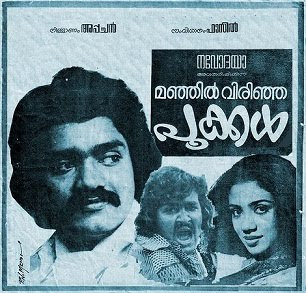|
Release
date:
|
April 8, 2020
|
|
Director:
|
Vivian
Radhakrishnan
|
|
Cast:
|
Sujin Murali, Shanavas
Sharaf, Rajalakshmi V.V., Rajeev D.H.
|
|
Language:
|
Malayalam
|
It is tough for an
independent film without familiar faces to get public attention – even less so
when it is not in theatres or on a prestigious streaming platform. Yet debutant
director Vivian Radhakrishnan’s Veembu,
now available on Youtube, has generated a fair amount of conversation this
season. One reason is that actor Joju George unveiled the poster online. Another
is that director Midhun Manuel Thomas promoted it on his Facebook page when it
was released earlier this month.
Since these artistes
are known for devotion to their craft, it is natural for expectations to be
built solely on the strength of their support for Veembu. Thomas is just fresh from the stupendous critical success
of the crime thriller Anjaam Pathiraa,
so his patronage, if it can be called that, is particularly significant here
because Veembu too is a thriller.
Now for the bad
news. If Messrs George and Thomas meant to be kind, their kindness was
misplaced – because Veembu does not
deserve them.
At a basic level, the
film’s concept is thought-provoking and seems exciting. Veembu means to offer an insight into how the truth is manipulated
in the media to suit the powerful while maligning the weak. The journey from
premise with promise to full-fledged film is rocky though. Veembu is pretentious, trying really hard to be cool and gives the
appearance of being convinced that it has achieved that goal.
Veembu’s protagonists Kinavu and Abukutty are friends in remote rural Kerala.
Kinavu is an autorickshaw driver taking care of his old mother who has been
diagnosed with dementia. One day, desperate for a large sum of money, he agrees
to commit a serious crime. Circumstances go out of
his control largely as a result of his own inability to stay focused.
Veembu’s primary problem is that it is more preoccupied
with form and structure than content. It starts with a man of small build being
tortured by what appears to be a criminal gang. The fellow appeared in a selfie
with someone he claims not to know. His captors think he is lying. One of them
orders him to describe the circumstances that brought him to this pass as if he
is narrating the script of a film. He agrees. That’s how it comes about that we
get to hear the story of Kinavu and Abukutty.
The narrative device
serves little purpose, the storytelling is over-stretched and the characterisation
inconsistent. A man is rough with his elderly parent half way through the film
but seems utterly devoted to her before and after that. Time is wasted on
extraneous developments, such as Abukutty trying to have a fling with a married
woman, that contribute nothing to the character development or the denouement.
And by the time that neat twist comes around, involving two intruders and a heavy
object, I was struggling to keep my eyes open and care for the people on screen.
DoP Vishnu
Vijayarajan does deliver some eerie frames, well complemented by ominous background
music. Particularly impressive is the shooting of a man held captive through Veembu. After a while though, these feel
like embellishments masking weak writing. No amount of overhead shots of men
weeping in a forest as seen through falling raindrops can camouflage the fact
that the men are written as outlines without the colours filled in.
In its tone and
tenor, from the beginning Veembu feels
like a wannabe Angamaly Diaries, but
again, no amount of stylisation, lookalikes in the cast and derivative music
can give you the panache and heft of Lijo Jose Pellissery’s lovely 2017 film. After
watching Veembu, I learnt from Google
that Vivian Radhakrishnan assisted Pellissery on Jallikattu and has earned some praise for a recent making-of-Jallikattu video. Clearly, admiration for the boss does
not necessarily translate into great art.
From among an
inconsistent cast, several actors in Veembu
stand out as naturals. Sujin Murali as Kinavu and Shanavas Sharaf as Abukutty
are both easy before the camera, and will hopefully get better films in future.
Sharaf reminded me of Tito Wilson, Angamaly Diaries’ U-Clamp Rajan, both in terms of looks and conviction. Another
charismatic presence is Rajeev D.H. playing a man imprisoned for no fault of
his – he is attractive and though his role is largely silent, manages to convey
anguish with his intensity.
According to
Radhakrishnan who wrote, directed and edited Veembu, the film has been in the cans for two years mostly due to censor troubles. If
you can bear the tedium of its 2 hours and 20 minutes, in the end you will
discover its troubling politics. Through a raucous
monologue in the climax, in the guise of criticising the media – a worthy
objective, no doubt – Veembu takes potshots
at those who highlighted the communal angle in the rape of a Bakarwal child in
Kathua in 2018 and other liberal causes.
In a better-made
film, that finale – confused or intentionally illiberal? – would have merited a
critique. Veembu is so vacuous and
boring, it is not even worthy of anger.
Rating (out
of 5 stars): 0.5
|
Running time:
|
140 minutes 57 seconds
|
This review has also been published on Firstpost:





